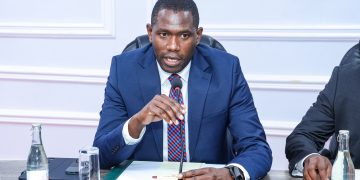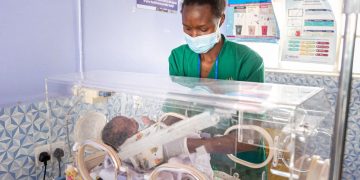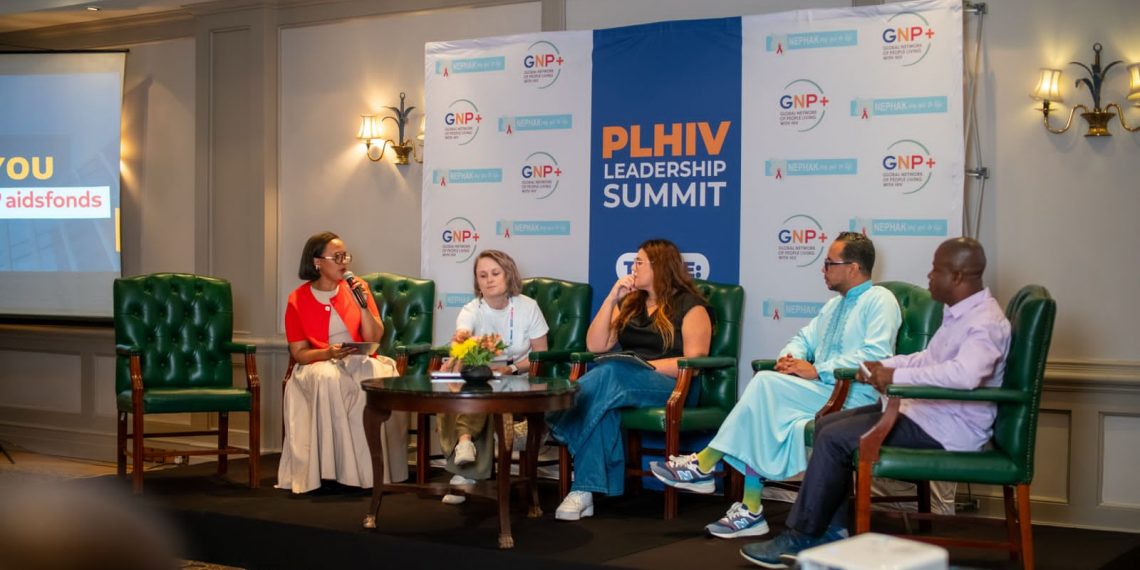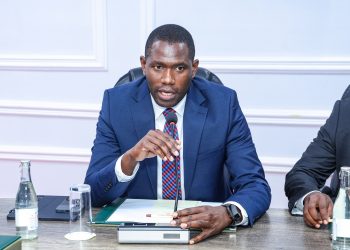As HIV funding continues to decline, national governments are increasingly taking over the management of HIV programs, in Kenya the Ministry of Health has proposed integration into the broader Healthcare system, a move that signals a major shift for support networks that have long been the lifeline for people living with HIV (PLHIV).
This transition was at the focus of PLHIV Leadership Summit 2025 held in Nairobi, where The Global Network of People Living with HIV (GNP+) recently convened more than 30 leaders from PLHIV networks across the world to reflect, strategize, and adapt to the evolving HIV response ecosystem.
Speaking at the PLHIV summit, Sbongile Nkosi, Co-Executive Director GNP+ urged stakeholders to work with the government to support PLHIV despite funding cuts.
“We need to reorganize HIV response to adopt the current realities so that we can never be affected by a strike of the pen like we did, due to the funding cuts people have fled HIV advocacy, because for them HIV was a career opportunity but we have to adapt to make sure we do not lose the gains we have made and start from Zero.”
For years, these networks have been vital in filling in gaps for key populations by offering community-led care, advocacy, and support. But as programs are absorbed into national systems, their roles are poised to shift in response to new structures, funding models, and policy landscapes.
According to GNP+, the cancellation of PEPFAR and USAID contracts has already impacted over USD 2.88 billion in HIV-specific funding, triggering USD 567 million in monthly cuts. This has led to widespread disruption in community health systems, staff shortages, and halted services in PEPFAR-funded clinics threatening to reverse decades of hard-won progress.
Calling for collective resilience and practical collaboration with governments Co-Executive Director at GNP+ Florence Anam, Echoed Nkosi’s sentiments, she reflected on the gains the networks have made over the years to ensure the rights of PLHIV.
“I don’t know where this journey started for you, as a person living with HIV. But I know for all of us, it started in darkness. It was very dark. Individually. No community yet. You sat in your truth with your two lines.”
“And when times are hard, we often forget where we’ve come from. Or rather, when there’s change and change is hard—we forget that we are the same resilient people who have changed before, and will change again.” She added.
A new Chapter
Nelson Otuoma, Executive Director of NEPHAK (National Empowerment Network of People Living with HIV/AIDS in Kenya), acknowledged the gravity of the transition and encouraged networks to embrace integration and leverage each country’s constitution to ensure that the rights of PLHIV are protected.
“HIV program as we knew it is over. We must be bold and courageous enough to accept that and move forward. At the end of the day, whether in Kenya or elsewhere, networks operate within constitutions. And our constitution guarantees the right to health for all—including people living with HIV. That should be our foundation going forward.”
As the sector grapples with funding uncertainty and political shifts, the focus is on building national systems that are inclusive, innovative, and accountable. For PLHIV networks, the path is clear, ensure that the new systems do not exclude the communities they were meant to serve are inclusive and accountable.
“The lives of over 40 million people living with HIV worldwide extend beyond mere statistics. It’s not just about survival—it’s about thriving.”
According to Dr. Nduku Kilonzo of Yemaya Health Advisory, integration may be the answer to sustainability of HIV programs.
“Governments and country stakeholders have agency and country systems, mechanisms that are the gateway to sustainability. The HIV response must be redesigned for delivery within Government multi-sector national systems and mechanisms- with strategic investments in national systems- data, supply chains, laboratory and community health to safeguard the HIV response.”
Several leaders at the summit agreed that the shift presented an opportunity for the networks to reimagine the HIV response not just as a health intervention, but as a rights-based, people-centered system built to endure so as to safeguard all the gains made in HIV response and realize the 2030 goal of ending AIDS as a public health threat.














